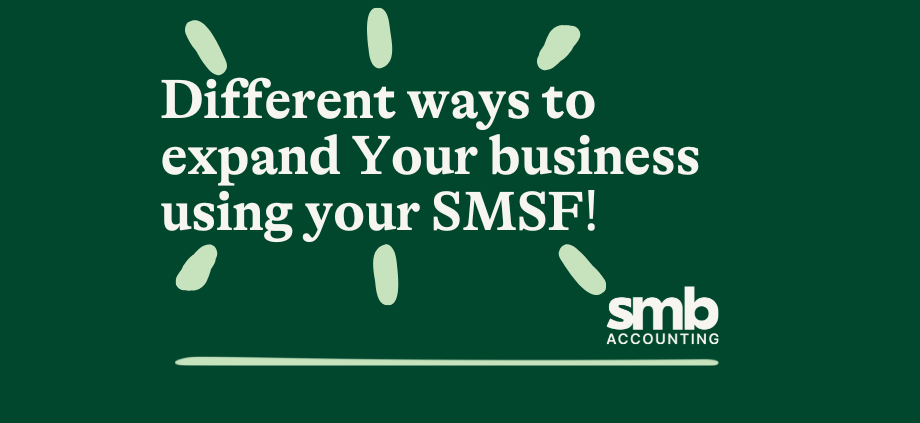Different Ways to Expand Your Business Using Your SMSF
As the competitive business landscape continues to grow at a rapid pace, savvy entrepreneurs are constantly exploring innovative strategies to expand their ventures and maintain a competitive edge. With that in mind, one powerful financial tool that has emerged as a game-changer for many business owners is the Self-Managed Super Fund (SMSF).
Offering unparalleled flexibility and control over your retirement savings, SMSFs have become popular for those looking to diversify their investment portfolio while expanding their business operations.
From acquiring commercial property to investing in shares and other financial instruments, the possibilities are virtually endless when it comes to harnessing the full potential of your SMSF. Read on to learn how SMSF can help finance your business and take it to greater heights!
How to Make the Most of Your SMSF and Use It For Your Business
1. Invest in Your Business Premises
One of the most common ways to use your SMSF to expand your business is by investing in your business premises. You can use your SMSF funds to purchase a commercial property that houses your business or to buy your current business premises. This strategy has several advantages:
It allows you to free up capital that can be reinvested in other aspects of your business, such as marketing or research and development.
- It provides a stable long-term investment for your SMSF, as commercial property prices tend to be less volatile than residential properties.
- Your SMSF can benefit from rental income and potential capital gains from the property, which can help grow your retirement savings.
- The interest expenses and other costs associated with owning the property are tax-deductible for your SMSF, reducing its tax liability.
However, there are certain risks and compliance requirements to consider when using your SMSF to invest in your business premises:
- The property must be used for business purposes, and any residential use is strictly prohibited.
- The transaction must be conducted at arm’s length, meaning that the purchase price and rental terms must be in line with market rates.
- Your SMSF’s investment strategy must consider the risks associated with this type of investment, including potential liquidity issues and concentration risk if a large portion of your SMSF is invested in a single asset.
2. Provide a Loan to Your Business
Another way to use your SMSF to expand your business is by providing a loan to your business. This is known as a Limited Recourse Borrowing Arrangement (LRBA) and involves your SMSF lending money to your business, which is then used to purchase an income-producing asset, such as a commercial property or equipment. Some benefits of this strategy include:
- Access to additional capital for your business at a potentially lower interest rate than a traditional bank loan.
- The interest paid by your business on the loan is tax-deductible, reducing its tax liability.
- Your SMSF can earn a steady income stream from the interest repayments, contributing to your retirement savings.
Keep in mind that there are strict rules and regulations governing LRBAs, including:
- The loan must be structured correctly, with a written agreement in place outlining the terms and conditions.
- The asset must be held in a separate trust, with your SMSF having a beneficial interest in the asset.
- The loan must be limited recourse, meaning that in the event of a default, the lender (your SMSF) can only recover the asset and has no claim over any other assets of the borrower (your business).
3. Invest in Shares or Other Equity Instruments of Your Business
Your SMSF can also invest in shares or other equity instruments (such as convertible notes) of your business, providing a source of capital to fund growth initiatives. This strategy can be particularly beneficial for small-to-medium-sized businesses that may struggle to access funding from traditional sources. However, there are some important considerations to keep in mind:
- Your SMSF’s investment in your business must not breach the ‘in-house asset’ rules, which limit the proportion of your SMSF that can be invested in related parties (including your business) to 5% of the total market value of your SMSF’s assets.
- The investment must be made on commercial terms and in line with your SMSF’s investment strategy.
- There are potential risks associated with concentrating your retirement savings on your business, particularly if your business experiences financial difficulties.
The Bottom Line
Using your SMSF to expand your business can be a smart move, but it’s essential to be aware of the rules and regulations surrounding such investments. In that regard, it’s best to always consult with a financial advisor or SMSF specialist to ensure you make informed decisions and that your actions align with your SMSF’s investment strategy.
By using your SMSF wisely, you can potentially grow your business and increase your retirement savings in a tax-effective manner.
If you’re looking for accountants on the Sunshine Coast, QLD, look no further than SMB Accounting. We are here to help you achieve your financial goals and provide you with the peace of mind you need. Contact us today to learn more about our services and how we can help you!

